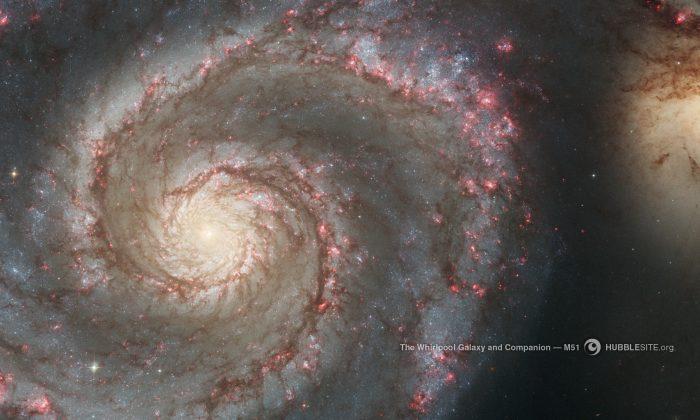Galaxies are easy to classify. Based on shapes, they’re either elliptical, spiral, or mergers. But with hundreds of billions galaxies out there, the task gets a bit tricky.
Here is where the power of the Internet—crowdsourcing specifically—comes in. Thousands of volunteers from across the globe joined in a space program called Galaxy Zoo, and started labeling the galaxies.
The project was initiated in 2007 with a data set of images from millions of different galaxies provided by the Sloan Digital Sky Survey, the largest digital maps of the universe. Led by the University of Minnesota, the Galaxy Zoo team consists of astronomers, astrophysicists, cosmologists, and other scientific minds from universities around the world.
“Our strategy is based on the remarkable fact that you can tell a lot about a galaxy just from its shape. Find a system with spiral arms, for example, and normally—but critically not always—you’ll know that you’re looking at a rotating disk of stars, dust and gas with plenty of fuel for future star formation. Find one of the big balls of stars we call ellipticals, however, and you’re probably looking at a more mature system, one which long ago finished forming stars. The galaxies’ histories are also revealed; that elliptical is likely to be the product of a head-on collision between two smaller galaxies, and smaller scars such as warped disks, large bulges or long streams of stars bear testament to the complexity of these galaxies’ lives,” says the Galaxy Zoo website.
In the first year, Galaxy Zoo made 50 million classifications by almost 150,000 people. The effort would have taken 30 years if done by a single scientist. The participants were asked to distinguish galaxies based on shape and other variants. Each galaxy was shown to multiple participants to ensure the accuracy of the data.
With the huge success of the first project, Galaxy Zoo 2 was launched with some 200,000 galaxies from the Sloan database. More questions were also added. Around 60 million classifications were made this time within 14 months (February 2009 to April 2010) by a team of more than 83,000 amateur astronomers. By the end of it, they had classified 304,122 galaxies in the universe.
Galaxy Zoo’s Hubble project involves comparing photos taken by the satellite telescope to view differences between galaxies in the past and present.
Why employ people instead of computerizing the whole process? Lucy Fortson, one of the project’s leaders and professor of physics and astronomy at the University of Minnesota, told RFE/RL: “The complexity of those shapes makes it very difficult for machine algorithms or computers to be able to tell the difference. The best machine algorithm that we have to tell the difference between these shapes is actually the human brain.
“There was a graduate student from Oxford [who was working on this] and his supervisor, and they sat in a pub and thought, ‘You know, if we just put this up on the web, do you think people would come and classify the galaxies?’”
“Now we want to go back in time and take a census of galaxies at the beginning of their formation,” Fortson said regarding future plans.
During classification, Hanny Van Arkel, a Dutch Galaxy Zoo volunteer and schoolteacher, found a strange object accompanying a galaxy. Scientists couldn’t recognize it and gave it the name Voorwerp, Dutch for object.
The universe is filled with vast unknowns; as we begin looking further, more and more fundamental questions start popping up, the majority of which neither we nor “qualified” scientific minds have answers to currently.
Do you want to be part of such universal projects? Then, visit here (https://www.zooniverse.org/projects) and go explore the final frontier.





